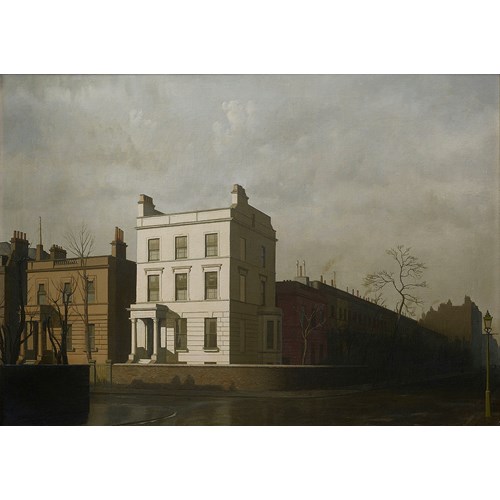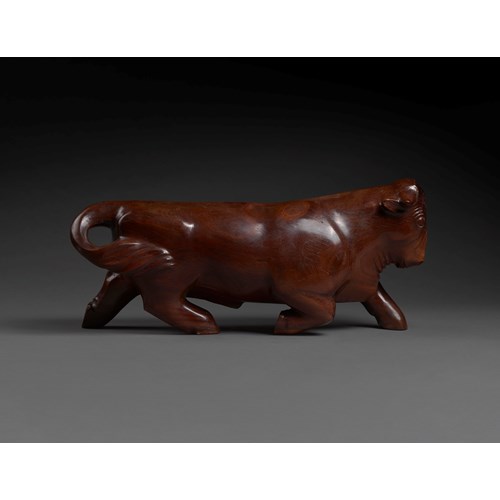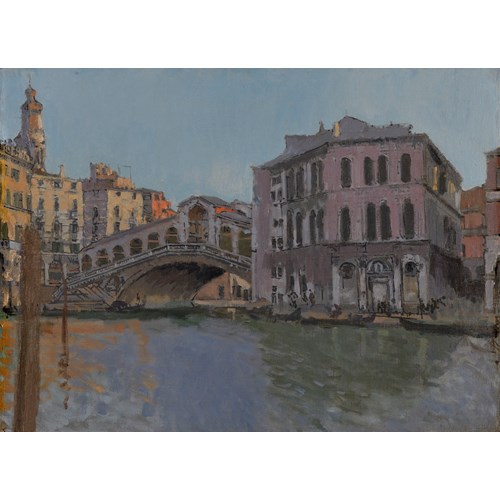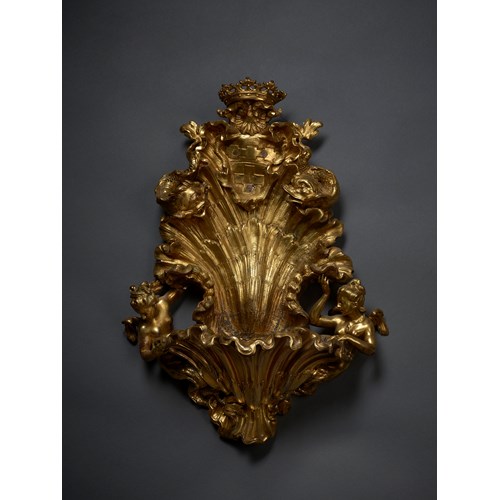Antonio Canova
Bust of Lucrezia d'Este
Date c.1821-2
Medium Marble
Dimension 42 cm (16¹/₂ inches)
Carved in the purest Carrara marble the stone would have been carefully considered and selected by Canova so as to offer him the best medium to work with and in order extract the exquisite and refined features that he sought. As was his practice Canova personally hand-polished the surface of the marble, creating a patina to denote the skin. This smooth finish is an iconic element of Canova’s oeuvre, animating the bust whilst suspending her in a timeless, idealised state of beauty. It is a carving which exudes serenity and neoclassical refinement but with a pulse underneath. This laboriously achieved effect, obtained through fastidious polishing with a pumice stone, was greatly admired at the time by patrons and fellow sculptors alike – a mastery that is still revered today.
Lucrezia d’Este (1535-1598) was a native of Ferrara and a member of the d’Este dynasty, daughter of Ercole II d’Este and became Duchess of Urbino (from 1570 to 1578) by marriage to Francesco Maria II della Rovere, Duke of Urbino. An iconic historical figure of the Renaissance, she was a renowned patron of the arts and the subject (along with her sister Eleanora) of a celebratory poem about her lineage by the Italian 16th century poet Torquato Tasso (1544-1595) entitled O figlie di Renata (O daughters of Renata).
Canova’s work is celebrated for having defined a new aesthetic, inspired by the great neo-classical theoretician, Johann Joachim Wincklemann, and based upon the noble simplicity and idealised beauty of Antiquity. Canova’s focus on balance, grace, and proportional exactitude are perhaps best realised in his series of Teste Ideali. These were, importantly, the artist’s own invention rather than the result of commissions. They were given to close friends and patrons as gifts - testament to their very personal significance. Several were indeed given to English patrons for their role in assisting Canova in his efforts to restore artefacts to Italy after the Napoleonic invasions.
The heads can be divided into three types: Idealized, Personified, and Historicised – the present Bust of Lucrezia d’Estebeing the latter of the three. Canova’s stunning technical virtuosity is laid bare in the ‘quiet greatness’ of these subtly different Heads, which remove idiosyncrasies in an obsessive search for utmost perfection and harmony. The bust is comparable to another ideal head, that of Laura, 1818, in the Chatsworth Collection (fig.1). The Lucrezia bust was likely pointed from the same model, and both works retain traces of the pointing marks left by callipers.
Alexander Baring (1774-1848), 1st Baron Ashburton a politician and banker from the famous family of English bankers by that name. The second son of the first Baronet Sir Francis Baring, his grandfather, John Baring (1697–1748) was a German immigrant who moved to England in the early 18th century. In 1807 Alexander took over the reins of Baring Brothers & Co. He was always very active in politics and held close relations in public finance. In 1832 he accepted the post of Chancellor of the Exchequer in the Duke of Wellington's ministry, and during the 1840s was called as an expert to advise Robert Peel’s government and subsequently raised to the peerage as Baron Ashburton.
Alexander Baring was also a trustee of the British Museum and the National Gallery in London. As a result of his passion for art he met the French Prime Minister Talleyrand who entrusted Baring with his memoirs. The French Prime Minister also gave Baring Antonio Canova’s bust of Napoleon as a gift.
Baring split his collection between his London and country residences. In the city, he owned Bath House in Piccadilly, which became a museum for his prestigious collection of Dutch, Flemish, Spanish and Italian paintings. In the country he owned the iconic Grange, Northington in Hampshire, bought in 1817. Originally built in the 17th century, the house was updated in an impressive neo-classical Greek revival style in 1804 by the architect who designed the National Gallery, William Wilkins (1778-1839) by the previous owner, Henry Drummond (1786-1860). Baring also owned Canova’s San Giovannino and a herm of Peace as well as works by his contemporary Bertel Thorvaldsen.
One of only approximately twenty-eight ideal heads produced by Canova, it is one of the very few not in museums and represents the apotheosis of neoclassical carving from Canova’s much lauded and acclaimed series.
In 2019 Canova was the subject of two important shows, both held in Milan[1], namely Canova and Thorvaldsen: The Birth of Modern Sculpture, at Gallerie d’Italia, and also Canova:Volti ideali at the Galleria d'Arte Moderna di Milano. The present bust was requested for inclusion in the latter show, focusing on Canova’s Ideal Heads, but unfortunately due to timings could not be – however the original plaster complete with pointing marks, from Possagno, was included.
Date: c.1821-2
Medium: Marble
Dimension: 42 cm (16¹/₂ inches)
Provenance: Alexander Baring (1744-1848), 1st Baron Ashburton, Bath House, Piccadilly and The Grange, Northington, Hampshire
Signora Festa, gifted by above and by descent to
Dr Giorgio Festa, Rome, by descent to
Giorgio Festa Jr., by descent to
Alberto Festa,
Private Collection, Switzerland, acquired above 2009, to 2019
Literature: Cicognara, L. (1823) Catalogo cronologico delle opere di Antonio Canova, Venice, pp. 55-73.
Teotochi Albrizzi, I. (1823). Opere di scultura e di plastica di Antonio Canova, descritte da Isabella Albrizzi nata Teotochi, IV, Pisa, pp. 86-87.
Waagen, G.F. (1854). Treasures of Art in Great Britain: Being an Account of the Chief Collections of Paintings, Drawings, Sculptures, Illuminated Mss., &c. &c. in Three Volumes, London, John Murray Albermale Street.
D’Este, A. (1864). Memorie di Antonio Canova scritte da Antonio D’Este e pubblicate per cura di Alessandro D’Este, con note e documenti, Florence, pp. 344-346.
Coletti, L. (1928). Unknown works of Antonio Canova, in “Art in America and elsewhere”, vol. XVI, n. 2, pp. 86-89.
Pavanello, G. (1976). L’opera completa di Antonio Canova, presentazione di M. Praz, apparati critici e filologici di G.Pavanello, Milano, Rizzoli, p. 131-132, n. 346.
Honour, H. (2007). A letter to the previous owners from his residence at Villa Marchio, Lucca, 19 June 2007.
Exhibition: New York, Riverside Museum, International Center, Corona Mundi, 1928.
Bassano del Grappa, Museo Civico, Canova and Europe, 15th October 2022 to 26th February 2023
More artworks from the Gallery









_T638354709335648178.jpg?width=500&height=500&mode=pad&scale=both&qlt=90&format=jpg)